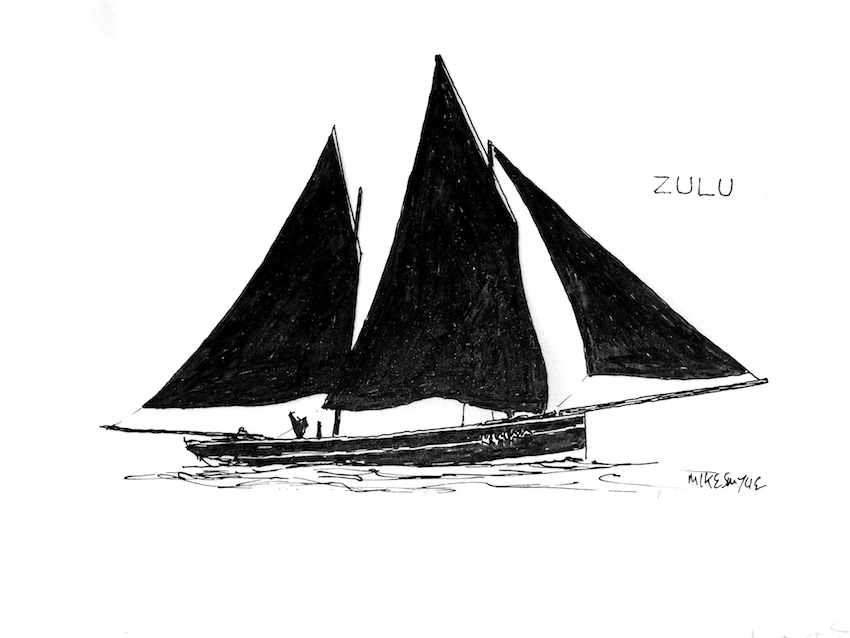By Mike Smylie
From the start here I must admit to being somewhat biased. Why? Because it’s my opinion that the Zulu – which is sometimes referred to as the Moray Firth fishing vessel – was the mightiest of all British sailing fishing craft. The King of the Seaboats, so to speak, comparable to the very herring, the kings of the sea, the silver darlings, that they sought. Argue the point as much as you want, you won’t persuade me. What cannot be disputed is that they were perfected machines for catching these herring before the advent of steam and petrol/paraffin engines.
Their name comes from Scottish sympathy for the Zulus of South Africa during the wars of the same name: the first vessel of the type appeared in 1879. It seems that many soldiers in the Scots regiments were being killed in a war that was considered an English act of aggravation (again!) and public opinion erred on the side of the natives.
The old well-worn story is that the Zulu, which was built up to 80ft long, was a crossbreed between the scaffie and the fifie, though there are different versions of how that came about. The one I prefer, albeit slightly tongue in cheek, is that when a Lossiemouth family wanted a new boat, the wife preferred the fifie type and husband the scaffie so they combined the best features of both. The resultant vessel – Nonesuch – had the fifie upright stem and a heavily raking sternpost which was typical of the scaffie. At 39ft on the keel she was relatively small compared to later boats.
These later craft had huge overhangs aft. Rigged with two massive dipping lugs like the fifie, the boats were renowned for their speed which meant they could get their herring back to market quick to get the best price. Some of the descriptions by those who saw these spectacular craft under sail suggest that they were awe-inspiring vessels to say the least.
St Vincent is a 1910-built smaller Zulu, made for herring drifting, and is still sailing. Violet, built in 1911, is currently in the US. Both these boats are around the 48ft mark, thus nowhere near as impressive as an 80ft version! Unfortunately there are no full-sized Zulus surviving today afloat although the 1903-built Research sits as an exhibit in the Scottish Fisheries Museum in Anstruther, Fife. Other smaller half-Zulus (as they’ve become called) and Zulu skiffs have been restored to sailing order.
What an incredible sight it would be if, as a national vessel, a replica full-sized 80ft-plus Zulu were built and able to sail around the coasts to represent Britain at the numerous maritime festivals. Instead we just get a concrete-encased throwback Cutty Sark hanging in the air stripped of all dignity, an object to serve tourism, bereft of all integrity. A Zulu would change all that so bring on www.giveusazulu.org!


